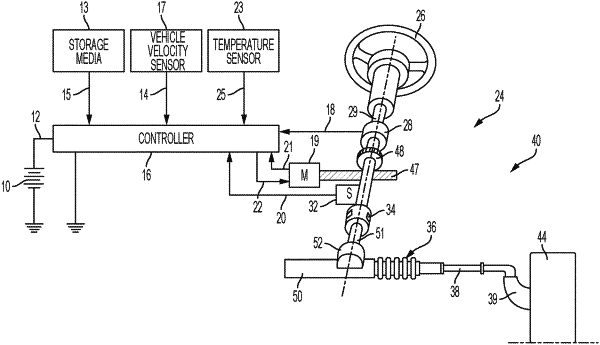| CPC B62D 5/0469 (2013.01) [F16H 1/16 (2013.01); H02K 7/1166 (2013.01); H02P 23/183 (2016.02); H02P 23/24 (2016.02); B62D 5/0409 (2013.01)] | 20 Claims |

|
1. A control system for controlling operation of a motor, comprising:
a processor; and
memory that includes instructions that, when executed by the processor, cause the processor to:
energize the motor to rotate a driveshaft coupled to a worm and to thereby drive a worm gear to rotate in a first direction;
stop the motor from rotating the driveshaft in response to the worm gear rotating in the first direction to or beyond a given one of a plurality of first stop positions each having distinct locations spaced apart from one another;
energize the motor to drive the worm gear to rotate in a second direction opposite the first direction and away from the plurality of first stop positions; and
change the given one of the plurality of first stop positions to another one of the plurality of first stop positions to cause the motor to stop rotating the driveshaft in the first direction at or beyond the another one of the plurality of stop positions during a subsequent cycle,
wherein changing the given one of the plurality of first stop positions to another one of the plurality of first stop positions comprises at least one of: changing the given one of the plurality of first stop positions in a predetermined pattern, or changing the given one of the plurality of first stop positions each time the worm gear is driven away from the given one of the plurality of first stop positions.
|